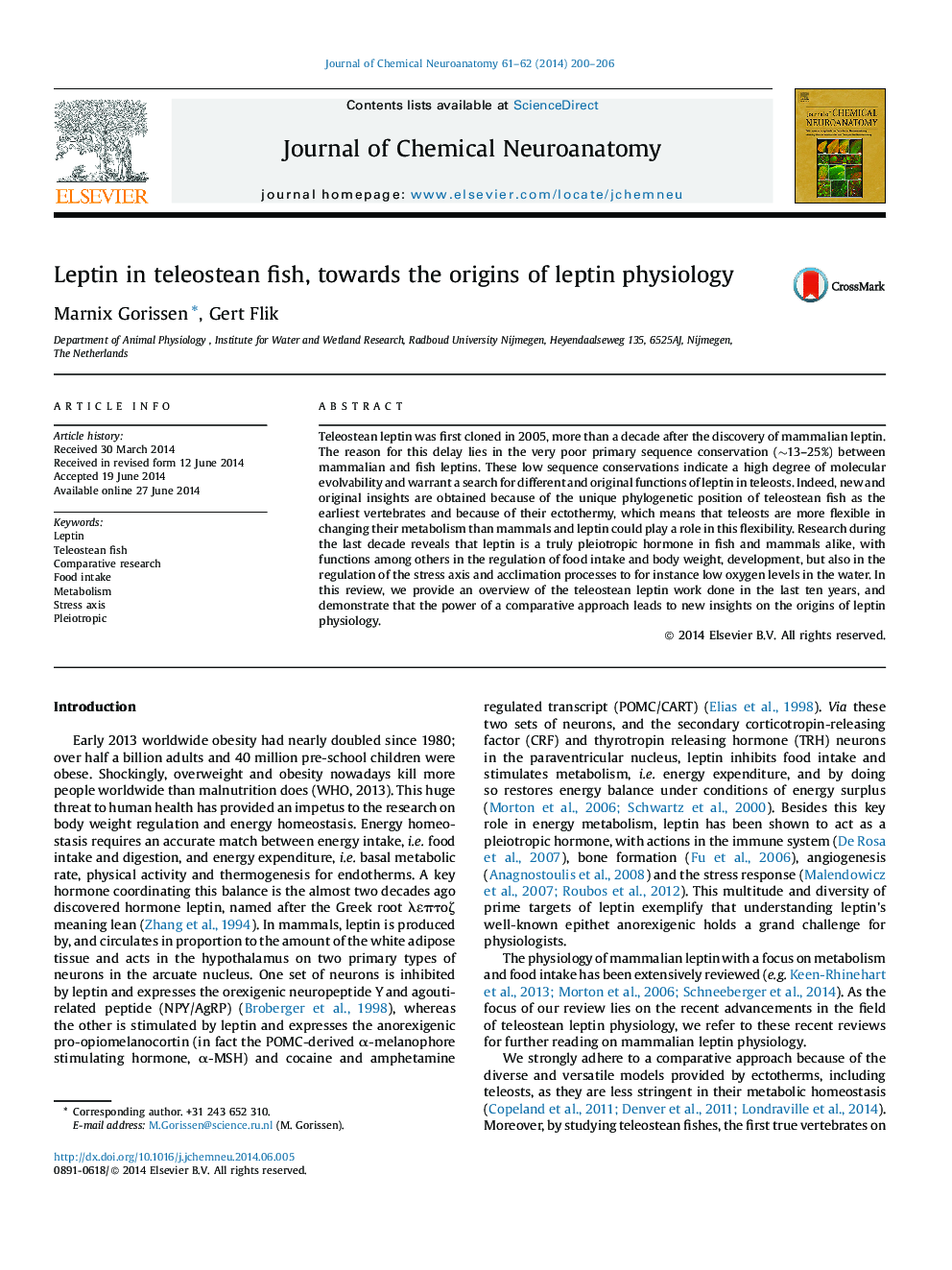| کد مقاله | کد نشریه | سال انتشار | مقاله انگلیسی | نسخه تمام متن |
|---|---|---|---|---|
| 1988792 | 1540456 | 2014 | 7 صفحه PDF | دانلود رایگان |
• We review the current status of the field of leptin physiology in teleostean fishes, from a comparative point of view.
• We review the phylogeny and evolution of teleostean leptin.
• We review leptin’s role in fish metabolism, food intake, stress-axis, reproduction and pinpoint the future challenges in the field of leptin physiology.
Teleostean leptin was first cloned in 2005, more than a decade after the discovery of mammalian leptin. The reason for this delay lies in the very poor primary sequence conservation (∼13–25%) between mammalian and fish leptins. These low sequence conservations indicate a high degree of molecular evolvability and warrant a search for different and original functions of leptin in teleosts. Indeed, new and original insights are obtained because of the unique phylogenetic position of teleostean fish as the earliest vertebrates and because of their ectothermy, which means that teleosts are more flexible in changing their metabolism than mammals and leptin could play a role in this flexibility. Research during the last decade reveals that leptin is a truly pleiotropic hormone in fish and mammals alike, with functions among others in the regulation of food intake and body weight, development, but also in the regulation of the stress axis and acclimation processes to for instance low oxygen levels in the water. In this review, we provide an overview of the teleostean leptin work done in the last ten years, and demonstrate that the power of a comparative approach leads to new insights on the origins of leptin physiology.
Journal: Journal of Chemical Neuroanatomy - Volumes 61–62, November 2014, Pages 200–206
